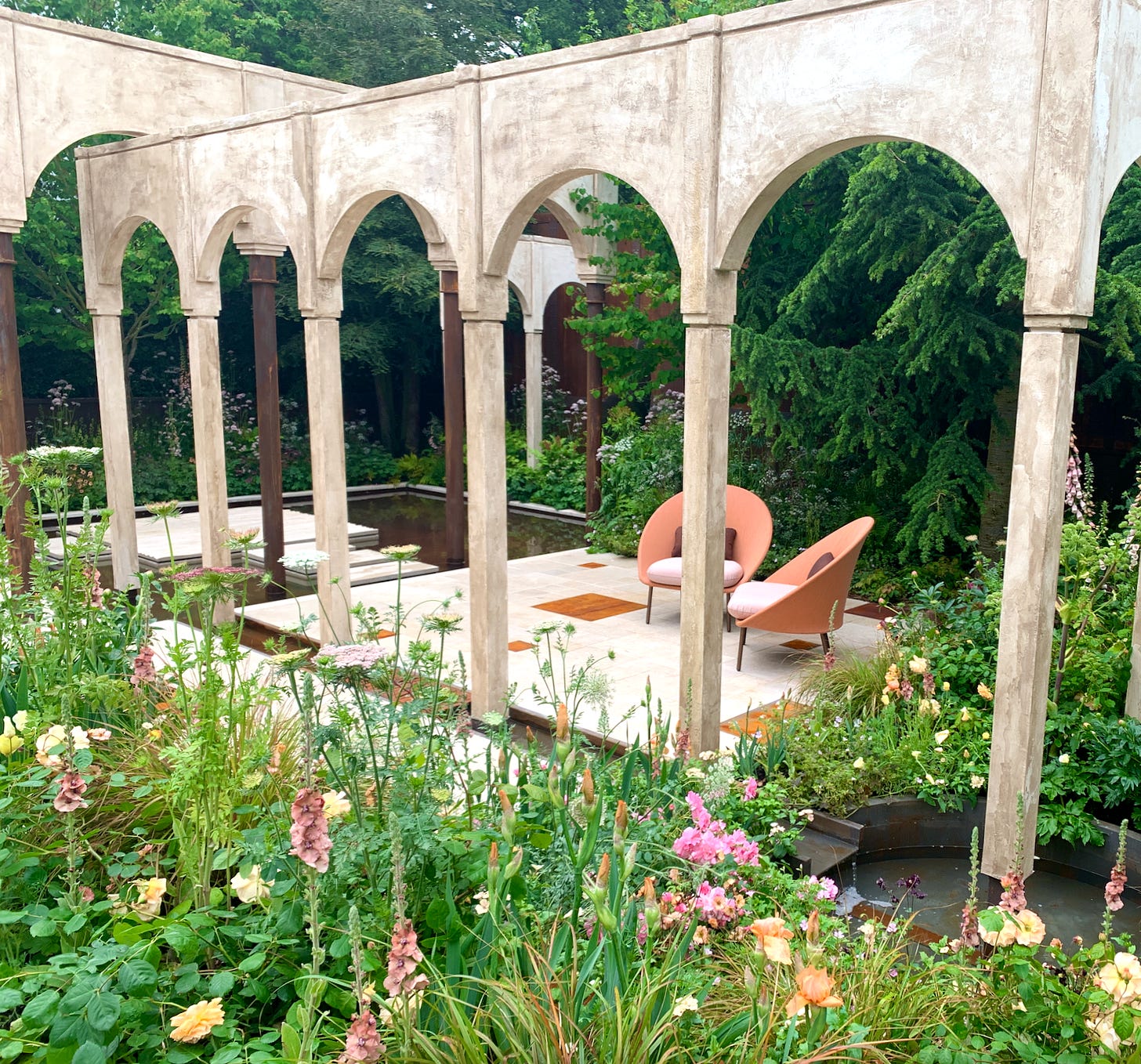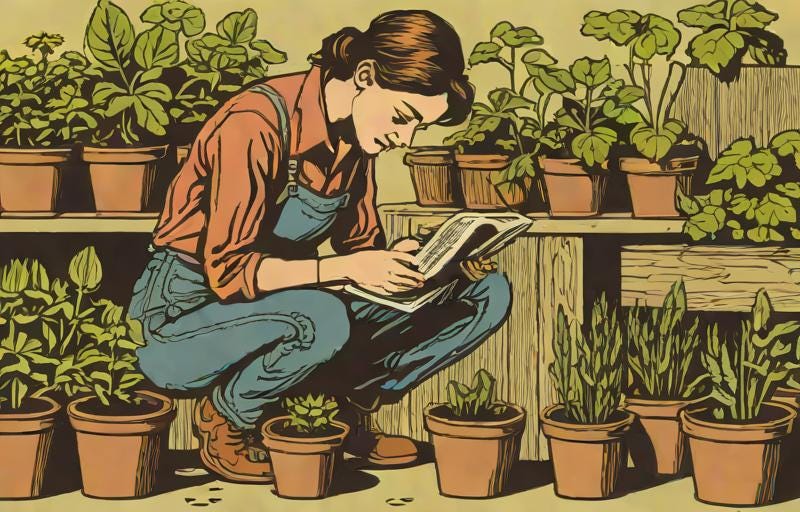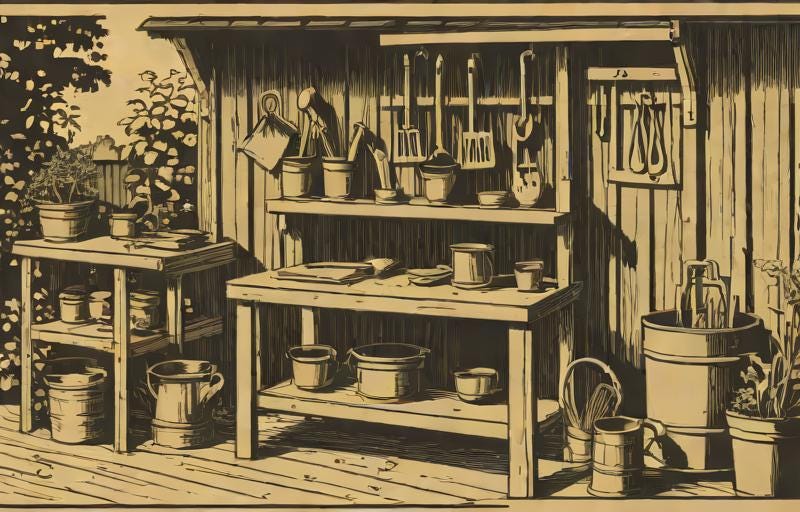Garden design principles - how to use them in your own garden. Plus: How to Garden in February
Also this week: some new dates for your diary, including a REAL-LIFE meet-up.
This post will be truncated (cut short) in emails, so please click ‘view entire message’ or head to your browser or app to read the full version there
It’s February - how is it that January went on forever, and yet we’re already nearly halfway into February?
It’s been a month since our last How to Garden This Month, and all of a sudden it’s that time again when we take a look at all those to-do lists that seem to be launching themselves at us. As ever, I’ll be working out what jobs I want to do, which jobs really need to be done now, and, most importantly, What Not To Do In Your Garden: those things which can be left well alone.
If you’ve never chitted before, let me tell you that chitting is one of the most satisfying gardening tasks ever
For paying subscribers, later in this post I’m going to be introducing you to some of the garden design principles that go towards creating a successful garden design: you’ll find this useful especially if you’re participating in the Small Garden Design Series. I’ll be demystifying these principles, one by one, explaining what they mean, and how you can apply these ideas to your own garden in order to make a place which, well, just feels right.

Those of you who are participating have been uploading your photos and responses to the first task which I set on Wednesday, and can I just say, you’re absolutely brilliant! We’ve seen garden spaces large and small in Scotland, US, England, Australia - and it isn’t too late to start if you’d like to be part of this. The very best bit is reading the comments you’re making on each other’s posts - I absolutely love these connections that gardening is forming all over the world. Look out for the next small garden design task which will be coming this week on the Chat.
What you really want is unity of all of these: when there’s a unity of plants, colour and materials, the view is immediately easy on the eye.
Talking about connections, I’ve set a June date for an IN REAL LIFE meet-up at a UK garden, which I’ll be telling you about later in this post. Whilst this first meet-up is UK-based, next week I’m going to be at the North West Flower & Garden Festival in Seattle, so if you’re coming to any of the talks there, please do come and say hello. I already know there are going to be some Gardening Minds there and I honestly can’t wait to meet you.
We had a bumper Show Us your Plots session on Sunday on the Chat - if you haven’t yet joined in, please come and say hello at the weekend - we’d love to see you there. If you’re still pondering about how to use the Chat, watch out for these two Zoom sessions:
‘Finding your way around The Gardening Mind and how to use Substack’ on Wednesday 21st February at 6pm UK time.
On Sunday 3rd March at 5pm UK time, there’ll be a Zoom for anyone who’s following the Small Garden series - we’ll get together and talk through experiences so far, and it’s also a nice opportunity to chat with newly-made acquaintances here on The Gardening Mind.
Both of these zooms will be around 30-40 minutes long.
And, to finish it all off, I shared an update on the show garden news which nearly finished me off. Thank you to all of you who joined in that chat with your excellent humour and shouts of encouragement so loud that I could almost hear them from here - that was a nail-biting week, I can tell you. There’ll be more updates on that this week.
Well, it really has been nail-biting - there was a long delay, and silence, and another delay….. SO, we redesigned the entire structure, removing the scary bits of the pavilion that might fall down. We'd kind of given up. And then today, we've JUST heard that the answer is.....
How to Garden in February
This is a tough list to make in February, and an even tougher one to stick to, as from where I’m sitting, it’s grey and wet out there, and this post from last December is as relevant as ever.
Because of the rain, I’ve been indulging in a bit of iris tickling. I had a few comments enquiring as to exactly what I was up to and why. The answer is, I think, because I fundamentally enjoy it: I’ve made it up, it’s probably not in the textbooks, but when did that ever bother us? It’s one of those mindful tasks which I lose myself in - a task so enjoyable that’s not a task at all. Does that make it a hobby, I wonder? On that note, do have a read of this post by
on the subject of hobbies.Just to clarify the auto-generated subtitles in the video below, I am NOT giving the irises parking tickets:







